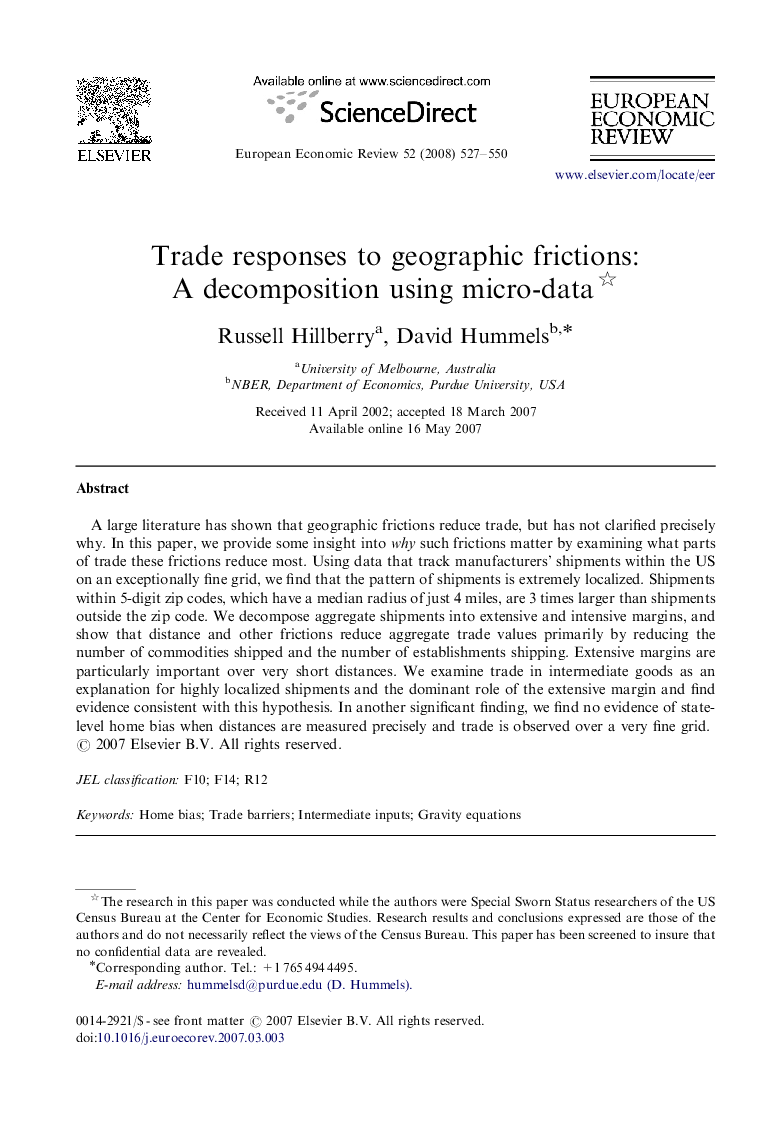| Article ID | Journal | Published Year | Pages | File Type |
|---|---|---|---|---|
| 5067623 | European Economic Review | 2008 | 24 Pages |
Abstract
A large literature has shown that geographic frictions reduce trade, but has not clarified precisely why. In this paper, we provide some insight into why such frictions matter by examining what parts of trade these frictions reduce most. Using data that track manufacturers' shipments within the US on an exceptionally fine grid, we find that the pattern of shipments is extremely localized. Shipments within 5-digit zip codes, which have a median radius of just 4 miles, are 3 times larger than shipments outside the zip code. We decompose aggregate shipments into extensive and intensive margins, and show that distance and other frictions reduce aggregate trade values primarily by reducing the number of commodities shipped and the number of establishments shipping. Extensive margins are particularly important over very short distances. We examine trade in intermediate goods as an explanation for highly localized shipments and the dominant role of the extensive margin and find evidence consistent with this hypothesis. In another significant finding, we find no evidence of state-level home bias when distances are measured precisely and trade is observed over a very fine grid.
Related Topics
Social Sciences and Humanities
Economics, Econometrics and Finance
Economics and Econometrics
Authors
Russell Hillberry, David Hummels,
